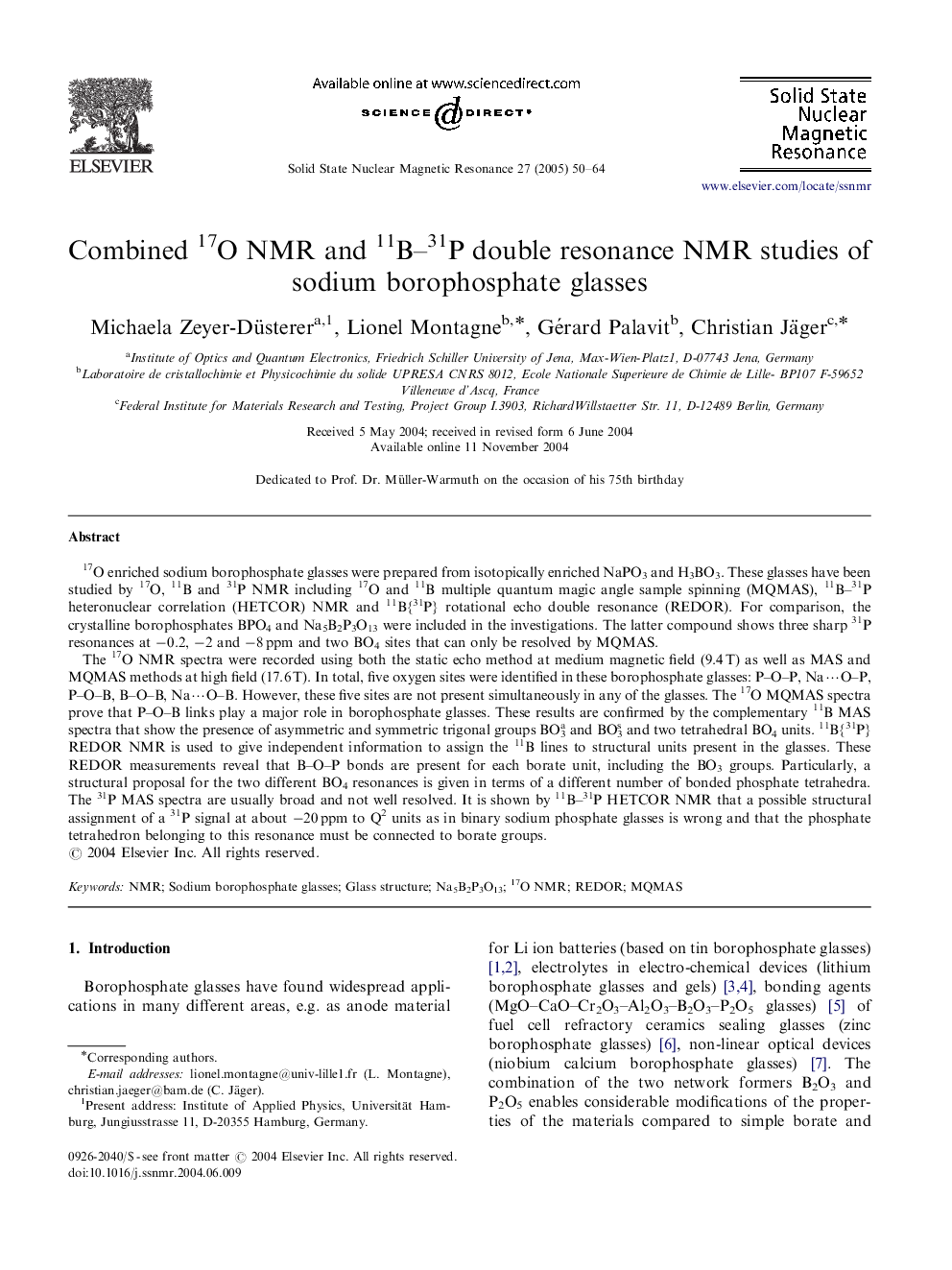| Article ID | Journal | Published Year | Pages | File Type |
|---|---|---|---|---|
| 9594227 | Solid State Nuclear Magnetic Resonance | 2005 | 15 Pages |
Abstract
The 17O NMR spectra were recorded using both the static echo method at medium magnetic field (9.4 T) as well as MAS and MQMAS methods at high field (17.6 T). In total, five oxygen sites were identified in these borophosphate glasses: P-O-P, Naâ¯O-P, P-O-B, B-O-B, Naâ¯O-B. However, these five sites are not present simultaneously in any of the glasses. The 17O MQMAS spectra prove that P-O-B links play a major role in borophosphate glasses. These results are confirmed by the complementary 11B MAS spectra that show the presence of asymmetric and symmetric trigonal groups BO3a and BO3s and two tetrahedral BO4 units. 11B{31P} REDOR NMR is used to give independent information to assign the 11B lines to structural units present in the glasses. These REDOR measurements reveal that B-O-P bonds are present for each borate unit, including the BO3 groups. Particularly, a structural proposal for the two different BO4 resonances is given in terms of a different number of bonded phosphate tetrahedra. The 31P MAS spectra are usually broad and not well resolved. It is shown by 11B-31P HETCOR NMR that a possible structural assignment of a 31P signal at about â20 ppm to Q2 units as in binary sodium phosphate glasses is wrong and that the phosphate tetrahedron belonging to this resonance must be connected to borate groups.
Keywords
Related Topics
Physical Sciences and Engineering
Chemistry
Physical and Theoretical Chemistry
Authors
Michaela Zeyer-Düsterer, Lionel Montagne, Gérard Palavit, Christian Jäger,
